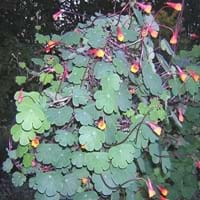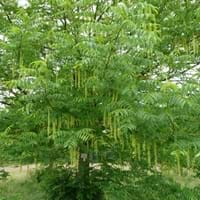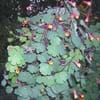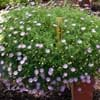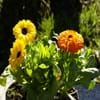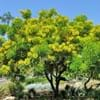Life Span
Annual
Perennial
Type
Flowering Plants, Vegetable
Tree
Origin
Argentina, Brazil, Central America, Chile, Mexico, South America
Asia
Types
not available
Not available
Habitat
Not Available
Boggy areas, Mixed deciduous forest
USDA Hardiness Zone
8-10
6-9
AHS Heat Zone
Not Available
9-1
Sunset Zone
not available
4, 5, 6, 7, 8, 9, 10, 11, 12, 13, 14, 15, 16, 17, 18, 19, 20, 21, 22, 23, 24
Habit
Not Available
Oval or Rounded
Flower Color
Orange, Peach, Pink, Red, Rose, Yellow
Yellow green
Flower Color Modifier
Not Available
Bicolor
Fruit Color
Pink, Red, White
Green, Brown
Leaf Color in Spring
Green, Light Green
Green
Leaf Color in Summer
Green
Green
Leaf Color in Fall
Green
Green, Yellow green
Leaf Color in Winter
Green
Not Available
Leaf Shape
Trumpet
Pinnate
Plant Season
Fall, Spring, Summer
Spring, Summer, Fall
Sunlight
Full Sun, Partial shade, Partial Sun
Full Sun
Type of Soil
Loam
Clay, Loam, Sand
The pH of Soil
Acidic, Neutral
Acidic, Neutral, Alkaline
Soil Drainage
Well drained
Well drained
Bloom Time
Early Fall, Early Summer, Fall, Indeterminate, Late Spring, Late Summer, Summer
Spring, Late Spring
Tolerances
Not Available
Drought, Soil Compaction
Where to Plant?
Ground
Ground
How to Plant?
From Rhizomes
Divison, Stem Cutting
Plant Maintenance
Medium
Medium
Watering Requirements
Allow soil to be completely dry in between waterings, Does not require lot of watering
Needs less watering
In Summer
Lots of watering
Lots of watering
In Spring
Moderate
Moderate
In Winter
Average Water
Average Water
Soil pH
Acidic, Neutral
Acidic, Neutral, Alkaline
Soil Type
Loam
Clay, Loam, Sand
Soil Drainage Capacity
Well drained
Well drained
Sun Exposure
Full Sun, Partial shade, Partial Sun
Full Sun
Pruning
Cut or pinch the stems, Remove dead or diseased plant parts, Remove deadheads
Remove all suckers, Remove damaged leaves, Remove dead branches, Remove dead leaves
Fertilizers
All-Purpose Liquid Fertilizer
All-Purpose Liquid Fertilizer, Nitrogen, Phosphorous
Pests and Diseases
Mosaic viruses
No serious insect or disease problems
Plant Tolerance
Drought
Drought, Soil Compaction
Flower Petal Number
Single
Single
Foliage Texture
Medium
Medium
Foliage Sheen
Matte
Glossy
Attracts
Butterflies, Hummingbirds
Birds, Butterflies, Hummingbirds, Not Available
Allergy
Not Available
Not Available
Aesthetic Uses
Not Used For Aesthetic Purpose
Not Used For Aesthetic Purpose
Beauty Benefits
Not Available
Not Available
Environmental Uses
Air purification
Not Available
Medicinal Uses
Not Available
Diaphoretic
Part of Plant Used
Fruits
Bark, Fruits, Seeds
Other Uses
Not Available
Not Available
Used As Indoor Plant
No
No
Used As Outdoor Plant
Yes
Yes
Garden Design
Foundation
Feature Plant, Shade Trees
Botanical Name
TROPAEOLUM tuberosum
Pterocarya fraxinifolia
Common Name
Anu, Tuberous Nasturtium
Caucasian wingnut, Caucasian walnut
In Hindi
Tuberous Nasturtium
wingnut
In German
Tuberöse Kapuzinerkresse
wingnut
In French
Capucine tubéreuse
wingnut
In Spanish
tuberosa capuchina
wingnut
In Greek
Οζώδης Νεροκάρδαμο
wingnut
In Portuguese
tuberosa chagas
wingnut
In Polish
bulwiaste Nasturcja
Wingnut
In Latin
Morbus nasturtium
wingnut
Phylum
Not Available
Magnoliophyta
Class
Not Available
Magnoliopsida
Order
Brassicales
Fagales
Family
Tropaeolaceae
Juglandaceae
Genus
Tropaeolum
Pterocarya
Clade
Not Available
Angiosperms, Eudicots, Rosids
Tribe
Not Available
Juglandeae
Subfamily
Not Available
Juglandoideae
Number of Species
Not Available
Difference Between Mashua and Wingnut
If you are confused whether Mashua or Wingnut are same, here are some features about those plants to help you choose better. Many people think that these two plants have the same characteristics, but one can see Mashua and Wingnut Information and learn more about it. Fertilizers required for proper growth of Mashua are All-Purpose Liquid Fertilizer, whereas for Wingnut fertilizers required are All-Purpose Liquid Fertilizer, Nitrogen and Phosphorous. Hence, one should know the basic difference between Mashua and Wingnut if you are planning to have them in your garden to enhance its beauty.
<
Flowering PlantsImportance of Mashua and Wingnut
Want to have the most appropriate plant for your garden? You might want to know the importance of Mashua and Wingnut. Basically, these two plants vary in many aspects. Compare Mashua and Wingnut as they differ in many characteristics such as their life, care, benefits, facts, etc. Every gardener must at least have the slightest clue about the plants he wants to plant in his garden. Compare their benefits, which differ in many ways like facts and uses. The medicinal use of Mashua is Not Available whereas of Wingnut is Diaphoretic. Mashua has beauty benefits as follows: Not Available while Wingnut has beauty benefits as follows: Not Available.
Compare Facts of Mashua vs Wingnut
How to choose the best garden plant for your garden depending upon its facts? Here garden plant comparison will help you to solve this query. Compare the facts of Mashua vs Wingnut and know which one to choose. As garden plants have benefits and other uses, allergy is also a major drawback of plants for some people. Allergic reactions of Mashua are Not Available whereas of Wingnut have Not Available respectively. Having a fruit bearing plant in your garden can be a plus point of your garden. Mashua has no showy fruits and Wingnut has showy fruits. Also Mashua is flowering and Wingnut is not flowering . You can compare Mashua and Wingnut facts and facts of other plants too.
